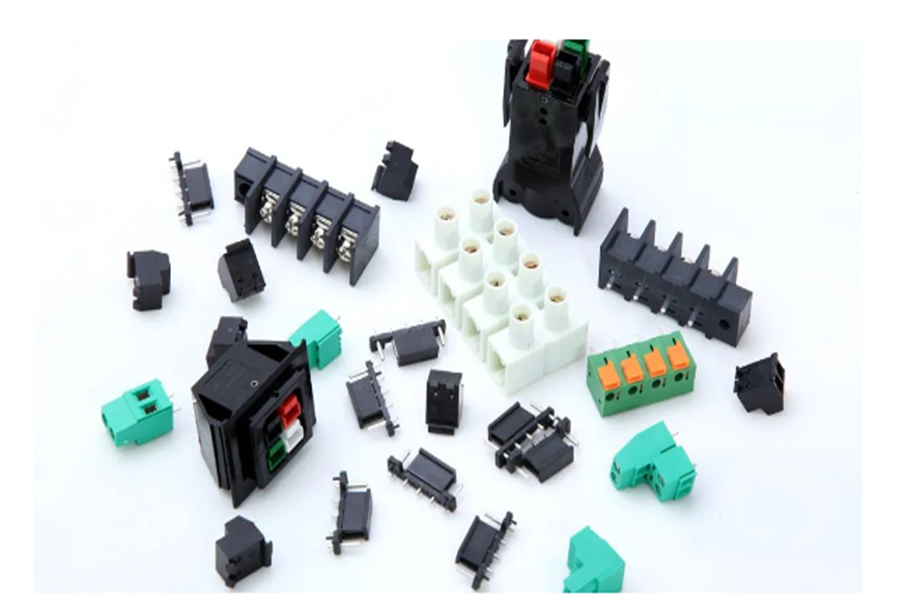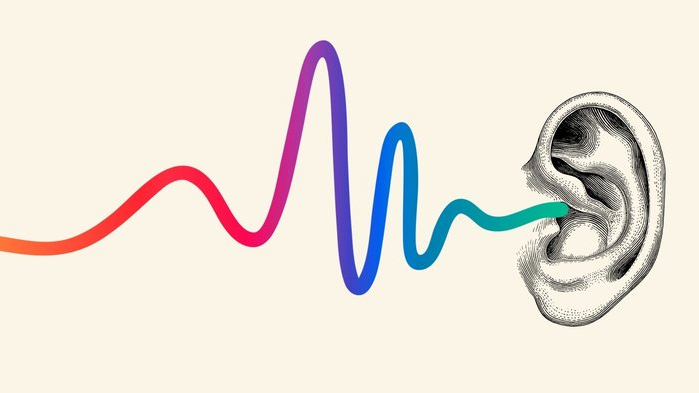
The United States, like other developed countries, is in an ageing population: the population of people over 65 is growing faster than other age groups.The sharp increase in the country’s elderly population directly affects the health status and health care of the people.Hearing loss is reported to be the third most common chronic disease that plagues the elderly.Currently, more than 7 million older people in the United States have suffered varying degrees of hearing loss.If the population over the age of 75 grows rapidly at this rate, there will soon be more than 1,100 people with hearing loss.As age and hearing loss are directly related, the aging of the population will be accompanied by increasing hearing loss.Senile deafness is often considered to be closely related to aging.Experts believe that hearing, bioacoustics, and biomechanics experts believe that senile deafness is caused by the deterioration of various physiological mechanisms and results in hearing loss, including noise exposure, taking ototoxic drugs, overdose and medication confusion.If the consequences of the disease are not considered, communication difficulties caused by sensorineural hearing loss alone will greatly affect the daily life of the elderly.At the same time, hearing loss also has negative effects on physical, sensory, emotional, and social aspects.Although hearing loss is relatively minor, these manifestations are often considered to be a significant obstacle by hearing loss patients.Fortunately, the negative effects of hearing loss can be improved by intervention.Therefore, hearing care is very important for the elderly.
Hearing loss diagnosis in the elderly
The U.S. Task Force on Prevention and Services recommends that older people perform hearing screening regularly. Screening includes establishing health strategies, providing testing hardware, acute care facilities, nursing equipment, and professional methods that can be used for screening.Each device has advantages and disadvantages, any screening equipment has restrictions, and environmental noise standards will affect the screening work.Hearing screening must use specific equipment and tools and must be performed by trained personnel.Hearing screening in a doctor’s office is practical because most elderly people over the age of 65 visit a doctor every year, and the office provides a relatively quiet environment for screening.Many audiological screening tools are currently available for objective detection of hearing loss and disability in the elderly.Loss is defined here as any damage or abnormality in the psychological, physical, anatomical tissues or organs’ living functions; and disability refers to the adverse consequences for an individual due to the loss of the normal organs of the individual.
Experts explain that the tools used to detect hearing loss and disability screening can be divided into two broad categories: the hearing disability scale and the hearing impairment screening scale.Hearing disability testing assesses the impact of hearing loss in daily activities.One of the screening methods is to use the “Elderly Hearing Impairment Record Form” to identify impaired hearing loss in the elderly, which is a reliable and effective method.The sensitivity and specificity of this method are both 70 % e and 80 % to identify moderate or severe hearing loss.Hearing screening is a quick and effective way to test hearing loss in older people.There are two types of equipment that can be used to screen for hearing loss: 1 ) A calibrated standard audiometer and a special hearing screening protocol.The benefit of using a calibrated audiometer is that it is an effective and reliable technique.However, due to its requirements for a quiet environment, it is not suitable for all test environments.Hearing screening suggests transmitting pre-selected frequencies ( 500 , 1000 , 2000, and 4000 Hz ) of stimulus sound signals into the ear.Hearing screening tests are 75 % to 80 % accurate.
In screening, it is recommended to use a combination of audiometer and hearing screening, because the relationship between hearing loss and impairment is not the same. The combination of these two methods can improve the accuracy of screening.Experts believe that once the elderly are identified as hearing loss after screening, the audiologist will conduct a comprehensive hearing assessment, receive hearing rehabilitation services, and use hearing aids in a timely manner. Currently, only 10–20% of the hearing-impaired elderly people wearing hearing aids.
Hearing Loss Intervention Strategies
Based on the hearing assessment, the relevant hearing rehabilitation and the need for treatment can be determined.In most cases, the hearing ability of the elderly can be assessed with standard audiometry techniques, however, appropriate modifications need to be made to adapt to the characteristics of the elderly’s body and age.Typical senile hearing loss is generally sensorineural hearing loss from mild, moderate to severe, with a typical hearing curve, that is, high-frequency hearing loss.In addition, the sensitivity to pure tone tends to deteriorate with age, and men have greater hearing loss than women of the same age.Senile hearing loss limits speech reception, especially in noisy environments, exacerbating difficulties in understanding.
Typical senile hearing loss cannot be cured by medicine, but only through interventions for hearing rehabilitation.Hearing aids are currently the mainstay of improving communication difficulties and reducing barriers for the elderly.Hearing aids amplify the sound to hearing-impaired patients and feel comfortable, while not exceeding the patient’s discomfort threshold for strong sound.Significant improvements in the design of new hearing aids have made hearing aids more accessible to elderly patients with hearing loss.At the same time, on the basis of continuing to improve the function of the hearing aid, the mechanical part of the hearing aid has also been improved, such as the volume switch, opening of the battery compartment, FM use and other operations are more flexible and convenient for the elderly.
At present, hearing aids can successfully improve the various inconveniences and social, psychological and functional barriers caused by hearing loss to the elderly.In addition, various assistive hearing devices can also be effectively used by the elderly to improve their communication ability in specific environments.It is worth mentioning that hearing aids that transmit acoustic signals by wires, magnetic induction, infrared, Bluetooth or radio frequency.Especially the infinite frequency-frequency hearing aid (FM system ) has begun to be accepted and used by the elderly.At present, various FM products developed by various companies are the best choices for the active elderly. For example, wireless Bluetooth-connected transmitters, smart links, and the integration of hearing aids, mobile phones, and unlimited frequency modulation are very convenient to use.
And other auxiliary multi-sensing media equipment is also quite effective. For example, technologies for improving public communication have been used in theaters, public conference rooms, offices, schools and other public places.The difficulty of mutual communication between personal living spaces can be further improved by other devices and equipment.Using lights as warning signals, telephones or doorbell warning devices can reduce the danger of life caused by hearing loss.Adjustable volume phone speakers have become a must-have feature in new phone designs.A TV subtitle decoder makes it easier for older people to enjoy TV.
Obviously, these assistive hearing and signal devices are effective rehabilitation methods, and they should be encouraged to be used in hospitals, elderly care institutions and homes.At the same time, we need to emphasize once again the important role of hearing aids in hearing rehabilitation.Hearing rehabilitation for the elderly includes hearing testing and communication improvements, as well as counseling services for hearing impaired patients and their families, guiding the selection of hearing aids, and follow-up methods to ensure the correct use of hearing aids.Help them maximize the use of various sensory communications, such as visual and residual hearing.It can also learn from the lip reading method and gestures used for deaf patients, which are complementary to hearing aids.The elderly hearing rehabilitation process should not only include patients, but also their family members or other related persons in order to maximize the benefits for the elderly.
The role of an audiologist
An audiologist is an expert in providing health care services for the elderly with hearing loss. Through specialized theoretical and clinical training, they have corresponding certificates or licenses and are qualified to provide professional services such as comprehensive prevention, assessment of hearing loss and related communication disorders. .Audiologists are leading experts in the evaluation and diagnosis of hearing loss in the elderly. These assessments include electroacoustic, electroacoustic, and hearing impairment tests on peripheral and central hearing systems.At the same time, the audiologist is responsible for evaluating and matching hearing aids and related hearing aids.Audiologists also provide rehabilitation services and training for individuals with hearing loss, family members and the public.An audiologist is a member of a multidisciplinary assessment of the social, psychological, physical and mental conditions of older persons.
In view of the current status and development trend of hearing loss in the elderly, the American Academy of Audiology actively engages in the elderly’s hearing health care on the basis of maintaining close ties with other geriatric medical experts. The elderly should be screened comprehensively to identify hearing loss and hearing disabilities.Screening should be used to identify the level of hearing loss in the elderly and to work towards assessment and rehabilitation.The elderly should be provided with high-quality hearing rehabilitation equipment, and advanced scientific and technological achievements should be applied to the elderly’s hearing rehabilitation, including providing hearing aids for the elderly.At the same time, government agencies and society are raising funds for research into hearing loss and aging.It is necessary to study the prevention of senile hearing loss, understand the process of hearing degradation of senile hearing loss, and improve the effectiveness of audiological management strategies to solve the difficulty of speech understanding faced by the elderly.
Link:Hearing loss and rehabilitation in the elderly globally
REF: Hearing aids China, Hearing Loss, Hearing Aids TypesThe article comes from the Internet. If there is any infringement, please contact service@jhhearingaids.com to delete it.






